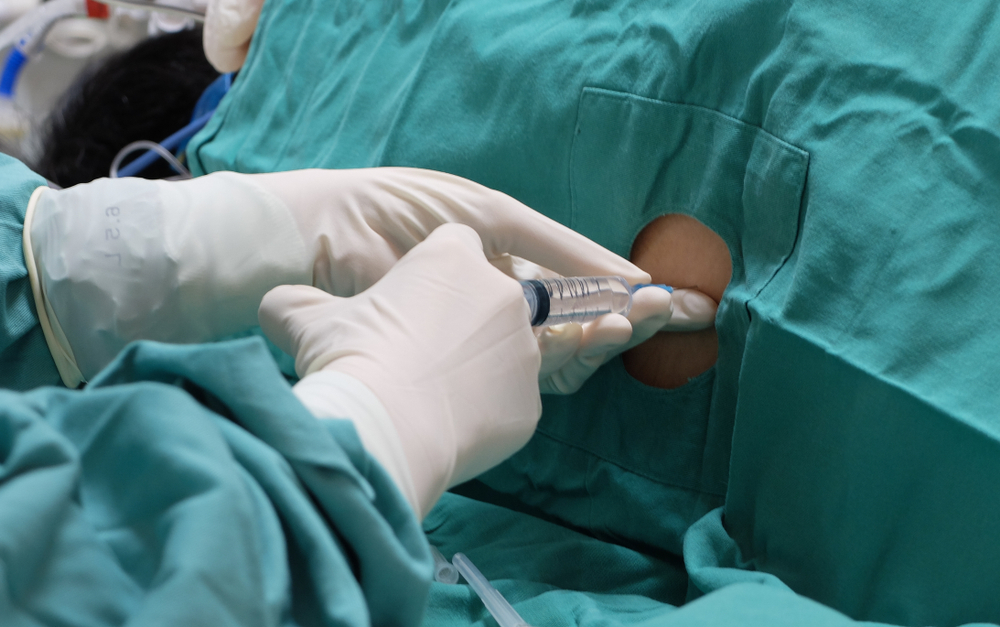
Roche announces details of its 'pivotal' huntingtin-lowering study
The GENERATION-HD1 trial will test whether RG6042 – formerly Ionis-HTTRx – slows the progression of Huntington's disease

It’s a time of huge developments in the field of huntingtin-lowering drugs, which aim to reduce production of the huntingtin protein that causes Huntington’s disease. At the European Huntington’s Disease Network (EHDN) meeting this past week, Roche announced firm details of the first ever pivotal study of a huntingtin lowering drug – RG6042, which you might know better as Ionis-HTTRx. So what do we know about the trial?
What is huntingtin lowering?
First, a brief recap about huntingtin lowering as a treatment for Huntington’s disease. Remember, the damage to brains in HD is caused by a harmful protein, called mutant huntingtin. The HD gene – sometimes called the huntingtin gene – is a recipe for making the huntingtin protein.

When a cell needs more of a specific protein, say the huntingtin protein, it makes a sort of scratch copy of the gene – a messenger molecule that’s written using a slightly different chemical, called RNA. Because this RNA is carrying a message, scientists call it messenger RNA or mRNA. Any break in this chain, from gene to messenger to protein, and the cell wouldn’t make any of that specfic protein.
This is how huntingtin lowering approaches to treating HD work – by targeting the huntingtin messenger RNA and telling cells to ignore or delete it. Less message, less protein.
Most HD researchers find this approach very exciting, because common sense and a ton of animal research suggests that if you reduce or eliminate the mutant huntingtin protein, you lessen the severity of HD symptoms.
ASOs in Huntington’s disease
An early leader in the field of huntingtin lowering is a biotech company called Ionis Pharmaceuticals, of Carlsbad California. Over decades, they’ve developed an approach called antisense oligonucleotides which are heavily modified DNA-like molecules that are programmed to recognize only one specific messenger RNA floating around inside of a cell.
When these ASOs stick to their programmed target, cells destroy it, dramatically reducing levels of one specific messenger RNA. Less messenger means less protein, even though the genetic code for the Huntingtin gene is still there in the DNA.
Based on success in animal tests, Ionis led an initial study in 46 brave volunteer HD patients that started in 2015. This small study was designed only to see whether its huntingtin-lowering drug, called HTTRx, was safe, and whether the treatment with HTTRx reduced production of the huntingtin protein in the nervous system. We can’t take a brain tissue sample, but we can measure levels of the mutant huntingtin protein in the spinal fluid that bathes the brain.
As discussed on HDBuzz, in December 2017, Ionis and their partner Roche announced that the trial had been a success. Remarkably, none of the 46 patients had dropped out of the study, despite the monthly spinal fluid injections required. And even more remarkably, treatment with HTTRx led to a striking reduction in the levels of the Huntingtin protein in the spinal fluid.
Roche is a huge drug company based in Switzerland and its US arm is called Genentech. Alongside the good news from the first trial, Roche confirmed that it would be planning and leading the next trial of HTTRx, which it renamed RG6042 as part of the handover. Get used to stories about RG6042 – but remember it’s the same HTTRx drug we’ve been rooting for all along.
A trial to test efficacy
Of course, both researchers and the Huntington’s disease community are interested in slowing the progression of HD, not changing the levels of some measurement in the spinal fluid. But Ionis’s successful safety study had just three months of dosing in 46 patients – that’s too short and too small to tell whether treatment had any effect on HD symptoms.
“GENERATION-HD1 will launch at the end of 2018, with the first patients enrolled in the beginning of 2019. It will take place at around 80-90 sites in about 15 countries.”
Now that we know Ionis/Roche’s drug lowers the protein, and appears to be safe, what we need now is a large study in a much bigger group of people – called a phase 3 trial – to determine whether RG6042 slows the progression of Huntington’s disease.
Since December, we’ve been eagerly awaiting an announcement about this larger trial. And on 16th September, we got it!
GENERATION-HD1
At the 2018 European Huntington’s Disease Network (EHDN) meeting, Scott Schobel from Roche gave the first official overview of the upcoming study. The trial will be known as GENERATION-HD1.
(The name GENERATION-HD1 comes from Global EvaluatioN of Efficacy and safety of Roche/genentech AnTIsense OligoNucleotide for Huntington’s Disease. Probably best just to remember the acronym…)
Size is important
GENERATION-HD1 will launch at the end of 2018, with the first patients enrolled in the beginning of 2019. It will take place at around 80-90 sites in around 15 countries.
No specific site announcements have been made, meaning there’s no public information yet on whether any given clinic or even country will host the study. We expect that information to come soon.
It will be a very large study – enrolling 660 patients with manifest HD. ‘Manifest HD’ simply means that they will be enrolling people formally diagnosed with clinical signs and symptoms of HD, not people with the mutation but without definite symptoms (premanifest or prodromal HD).
Eligibility
There are two main clinical deciders, or inclusion criteria. First, patients need to be “ambulatory” and “verbal” – that is, able to walk and talk. Second, they need to score 70% or more on an independent test called the Functional Assessment. That means a level of daily functioning where they can wash themselves, and perform “limited” household duties like cooking and using a knife.

Those are much broader clinical inclusion criteria than the previous trial, which was very strictly limited to very early HD with near-normal daily functioning.
There’s also a specific requirement that something called a CAP score has to be above a certain value.
The CAP score is a simple mathematical way to combine someone’s age and their CAG repeat count – the length of the abnormal bit of DNA that causes Huntington’s disease. This score is used because people with more severe HD mutations (longer CAG repeats) tend to have HD symptoms at a younger age. So if we want to track the progression of HD symptoms over time in a person, we have to take into account both their age and their CAG size. Setting a minimum CAP score requirement means the trial can be focused on people most likely to show benefit from the drug, which makes it as small and as fast as possible.
Lots of lumbar punctures
The trial will include a placebo or dummy treatment group, of approximately one third of the trial participants. This group is absolutely necessary to cope with the placebo effect – the fact that participating in a trial like makes people feel better, and even function better, even if the drug doesn’t work.
The other two thirds of the participants will be split into two groups, both receiving the active drug. Half of the treated group will receive the drug every month, and the other half every other month. This is exciting, because it could let us treat less frequently, if that proves equally effective to monthly dosing.
However, all participants in every group will have to have monthly injections into the spinal fluid, every month, for two years. The placebo group will get a placebo injection every month. The monthly drug group will get the drug every month. And the two-monthly group will alternate between drug and placebo injections. That means nobody will know what group they have been assigned to.
Bottom line: everyone in the trial will need to be OK with getting a lot of spinal taps and spinal injections – as many as twenty-five over two years.
Outcome measures
Success or failure in the trial will be determined in the USA by something called the total functional capacity scale, or TFC for short. This is a very simple rating scale based on a person’s ability to conduct basic duties around the house, work and take care of themselves.
In Europe, the trial will be using a slightly more sophisticated measure, called the composite Unified Huntington’s Disease Rating Scale or cUHDRS. This score takes into account a broader range of HD symptoms, combining the TFC, a movement score and some thinking tests.
“It will be a very large study – enrolling 660 patients with manifest HD.”
It’s slightly unusual, but not unheard of, to have a trial with different endpoints in different countries. But these scores are all measuring the same underlying process, which is HD getting worse over time, and the different regulatory agencies appear to have different opinions about how best to measure that. In the end, we would expect both scores to move in the same direction if the drug works.
Not every patient enrolls on the first day of the trial, so a trial in which each participant is involved for 25 months will take around twice that long to run, and possibly longer.
But wait, there’s more
Roche also announced another study – called the Natural History Study, aimed at providing crucial information about HD progression. Up to 100 patients will be enrolled, matched to participants in the already-running Open-Label Extension study of RG6042. Those open-label participants are the people from the first clinical trial, who are now all getting the drug regularly, so the natural history study will help understand emerging data from the open-label study. If all goes to plan, participants in the Natural History study will be offered open-label treatment too, after 15 months of participation including regular lumbar punctures.
And even more!
The EHDN meeting included updates on other exciting huntingtin-lowering programs, including Wave Life Sciences, PTC Therapeutics and Uniqure. We’ll be providing updates about those and other tidbits from EHDN 2018 shortly.
Now what?
Following on from the first study that demonstrated short-term safety, and successful huntingtin-lowering, we now have solid details about a ‘pivotal’ study to prove whether RG6042 works or not, and a very clear timeline on which that will happen.
It’s important to bear in mind that people who take part in GENERATION-HD1 will have a long and challenging road ahead in front of them, and taking part will be hard work, physically and mentally.
Inevitably, there will also be many people who are unable to take part for any one of a number of reasons. While that may be hugely disappointing for those people, the drug will get tested by volunteers across the world, and it’s important to try to remember that the purpose of the trial is to test the drug for everyone and for future generations – not to give the drug to any individual person.
That said, this is huge news. After many years of work by hundreds of people, we finally have a schedule to understand whether treatment with this huntingtin lowering drug, RG6042, could benefit HD symptoms.
We’re really excited about this announcement, and the state of the huntingtin-lowering field more generally. We think it’s fair for HD community members to feel the same way. Stay tuned to HDBuzz, for updates on this and other trial developments.
Learn more
For more information about our disclosure policy see our FAQ…


